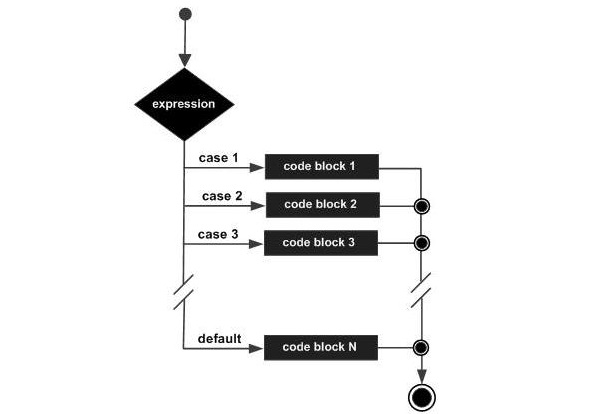
- Clojure - Home
- Clojure - Overview
- Clojure - Environment
- Clojure - Basic Syntax
- Clojure - REPL
- Clojure - Data Types
- Clojure - Variables
- Clojure - Operators
- Clojure - Loops
- Clojure - Decision Making
- Clojure - Functions
- Clojure - Numbers
- Clojure - Recursion
- Clojure - File I/O
- Clojure - Strings
- Clojure - Lists
- Clojure - Sets
- Clojure - Vectors
- Clojure - Maps
- Clojure - Namespaces
- Clojure - Exception Handling
- Clojure - Sequences
- Clojure - Regular Expressions
- Clojure - Predicates
- Clojure - Destructuring
- Clojure - Date & Time
- Clojure - Atoms
- Clojure - Metadata
- Clojure - StructMaps
- Clojure - Agents
- Clojure - Watchers
- Clojure - Macros
- Clojure - Reference Values
- Clojure - Databases
- Clojure - Java Interface
- Clojure - Concurrent Programming
- Clojure - Applications
- Clojure - Automated Testing
- Clojure - Libraries
Clojure - Case Statement
Clojure offers the case statement which is similar to the switch statement available in the Java programming language. Following is the general form of the case statement.
Syntax
case expression value1 statement #1 value2 statement #2 valueN statement #N statement #Default
The general working of this statement is as follows −
The expression to be evaluated is placed in the case statement. This generally will evaluate to a value, which is used in the subsequent statements.
Each value is evaluated against that which is passed by the case expression. Depending on which value holds true, subsequent statement will be executed.
There is also a default statement which gets executed if none of the prior values evaluate to be true.
Following diagram shows the flow of the if statement.

Example
Following is an example of the case statement in Clojure.
(ns clojure.examples.hello
(:gen-class))
;; This program displays Hello World
(defn Example []
(def x 5)
(case x 5 (println "x is 5")
10 (println "x is 10")
(println "x is neither 5 nor 10")))
(Example)
In the above example, we are first initializing a variable x to a value of 5. We then have a case statement which evaluates the value of the variable x. Based on the value of the variable, it will execute the relevant case set of statements. The last statement is the default statement, if none of the previous statements are executed.
Output
The above code produces the following output.
x is 5